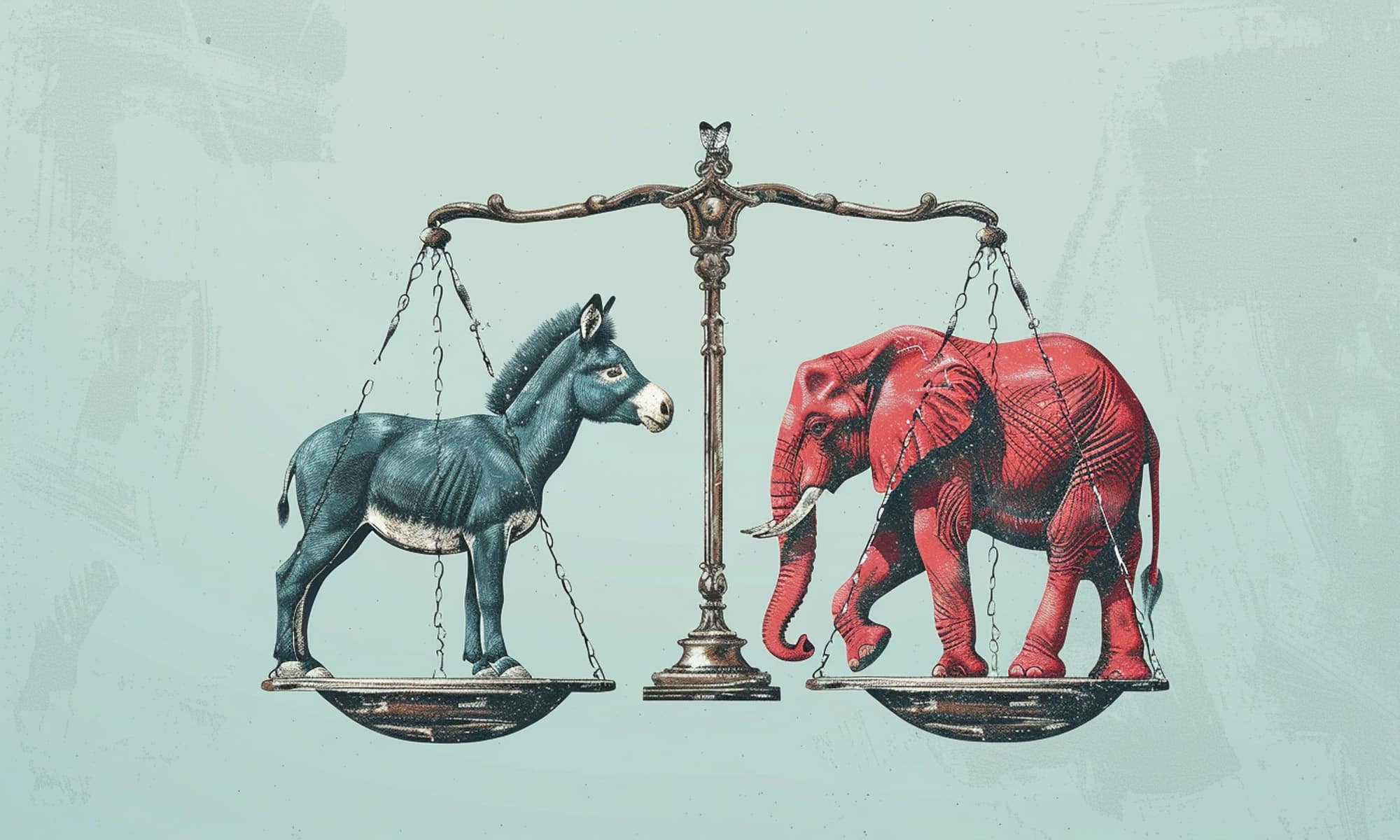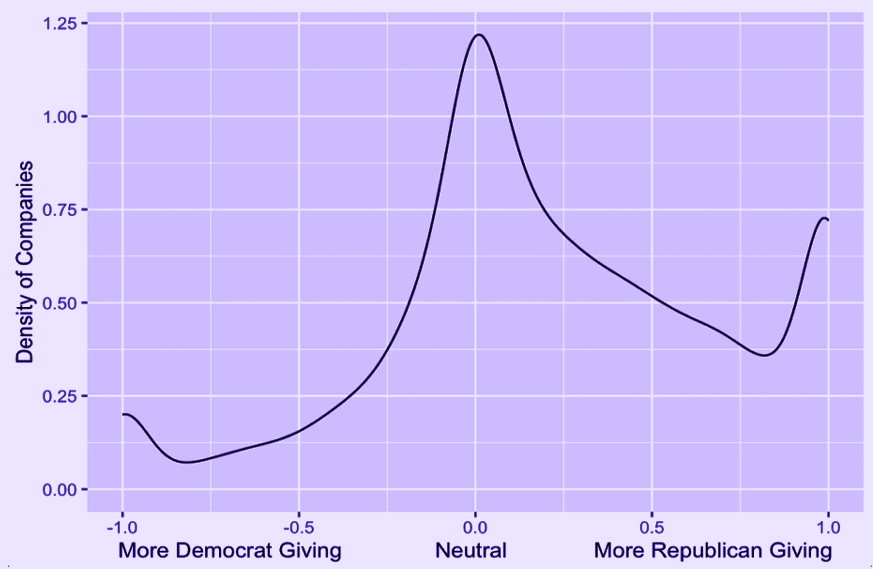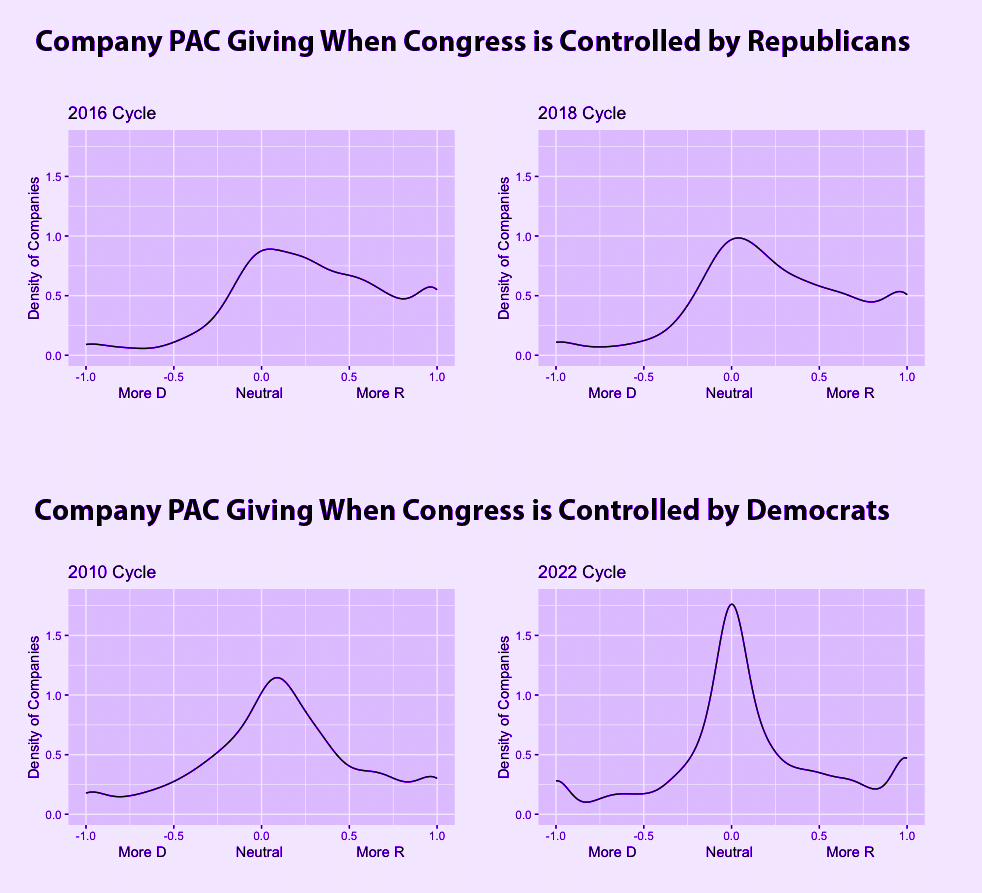Are Companies Realigning Toward the Democratic Party?
June 2024
Over the past several years, academics and pundits alike have predicted a shift in the way companies interact with the Democratic and Republican parties, especially after Jan. 6. My new study tackles this question to understand if companies are really shifting toward the Democratic party.
For decades, political science research has attempted to understand the ways that companies interact with the political system around them. After finding no evidence that interest groups “buy” public policy wins through lobbying and campaign contributions, scholars eventually settled on a theory very similar to what practitioners already knew — interest groups use various tools, including political contributions, to build relationships with policymakers in hopes that those relationships will help them influence policy decision-making.
Consequently, as scholars analyze political contributions data, they find that companies and other interest groups focus their contributions on lawmakers who have the ability to influence the group’s policy priorities. As a result, Congressional leaders, committee chairs and other influential policymakers receive more contributions from corporate PACs than rank-and-file members or those who are not as involved in the policymaking process.
Recent shifts in corporate priorities and the party system have raised questions about whether corporate practices that prioritize access are changing. In my recent study, I investigate these questions by looking at giving to Democrats and Republicans by more than 1,200 corporate PACs over the past seven election cycles, which include all contributions to candidates, leadership PACs and political parties from 2010 through 2022. I find several notable trends in my analysis.

Trend 1: A critical mass of companies give equally to both political parties. Looking at each company PAC’s Democrat to Republican giving ratio in each election cycle, I find that, while some companies favor Republicans or Democrats, most balance their giving between the parties. The Company Giving Ratios by Cycle chart, which provides an illustration of each company’s giving ratios in each of the analyzed cycles, illustrates that there are significantly more companies that give relatively equal amounts to Democrats and Republicans compared with those who strongly favor one party over the other.
While the average company maintains a politically neutral stance across all election cycles, there are differences in political posture based on company type. For example, companies in the construction, energy and manufacturing industries are more likely to be partisan while defense, professional services and transportation companies tend to be less partisan.
Company Giving Ratios by Cycle – 2010 through 2022

Trend 2: Among companies that favor one party over the other, more companies favor Republicans. While the largest number of companies balance their giving between Democrats and Republicans, there are a significant number that favor one of the political parties. There are significantly more Republican-leaning companies compared with Democratic-leaning companies. This pattern is consistent, even in election cycles when Democrats hold the majority in Congress. The Company PAC Giving When Congress is Controlled by Republicans vs. Democrats chart provides a look at giving ratios in Congresses in which both chambers are controlled by Democrats versus by Republicans. In election cycles where Republicans control both chambers, the distribution of contributions moves toward the Republican party.
It is important to note that the same does not happen when Democrats are in control. In these cycles, instead of shifting toward the Democratic party, the distribution of companies looks like a bell curve, with the large majority of companies splitting their contributions equally and relatively equal proportions of companies favoring the Democratic and Republican parties. Even when Democrats control Congress, there are still more companies that favor Republicans compared with those that favor Democrats.
Trend 3: These patterns hold up, even after Jan. 6. Recent media stories and political science research have predicted that companies would begin to favor the Democratic party in light of some corporations’ positions on social issues, shifting dynamics in the parties and events like Jan. 6. While prior studies show that companies have shifted contributions away from Republicans that objected to the 2020 election results (Gawehns and Meli 2022), there has not been a systematic study of overall giving patterns to Republican lawmakers. Other studies predict that companies will move away from the Republican party entirely and begin favoring Democrats (Hersh and Shah 2024).
The current study finds no clear evidence of such a shift. As pictured in the chart, companies were far more likely to be politically neutral in the election cycle after January 6 than they were to favor Democrats. Even after holding constant each company’s preferences, the political environment of the company’s home state and the size of the company, companies were no more likely to favor the Democratic party in 2022 than in 2010, which was the last time Democrats held the Presidency and both chambers of Congress. In all other election cycles, companies are more likely to favor Republicans than Democrats.
It is important to note that the analysis in this study includes PAC contributions but does not include individual contributions by corporate executives, trade association PAC support and other types of political contributions. While including all these contributions would provide a more complete picture of a company’s political posture, it is important to analyze PAC contributions because they represent public expressions of a company’s preferences — an important signal to the outside world about a company’s priorities.
The data presented here show what many public affairs professionals already know — that companies still use their PACs as a tool for establishing and maintaining relationships with key policymakers. Companies are more likely to maintain political neutrality than they are to strongly favor one party or the other, but when they do favor a party, they tend to favor Republicans. While we will have to wait and see how these trends play out in the long term, it is clear that, when it comes to PAC giving, predictions of company party realignment don’t hold water.
Company PAC Giving When Congress is Controlled by Republicans vs. Democrats

More News & Resources
Whether you’re building cutting-edge campaigns, engaging communities on social, mobilizing advocates, or exploring the power of new AI tools, THIS is where the future of advocacy comes alive.


